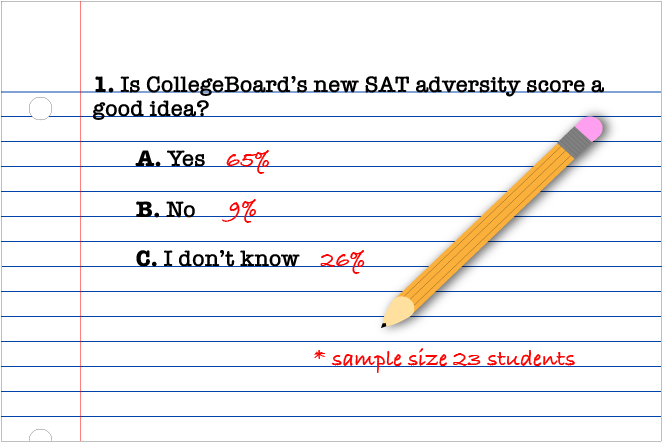For many college students, thoughts of the SAT are long past. Still, the mere mention of the phrase can cause flashbacks to cramming, broken pencils and stress sweats early on a Saturday morning. All this and more came resurfaced on May 16, when the SAT made headlines, not for another admissions scandal, but for a new addition to their tests: an adversity score.
What is the SAT adversity score?
This adversity rating would have no impact on students’ overall SAT scores, but it would be a separate number only reported to the colleges. In theory, this number would help colleges add context to the score a student receives; while looking at a score, admissions staff would also see the adversity rating, reflecting adversities students face that could have served as a disadvantage when taking this test.
How does it work?
College Board calculates each student’s adversity score through 31 factors sorted into two general categories: neighborhood and school. The individual data points aren’t specific to the individual students but rather to their environment. For example, some of the factors included for the neighborhood are median household income, percentage of adults without a high school degree and crime rates. Similar factors are taken into account for the schools. All of this information is then put together to create a score from 1 to 100, with 50 being average disadvantage and anything above being higher disadvantage.
What are people saying?
After the College Board’s initial announcement, there was a mixed bag of responses. Uncertainty around the fairness of the SAT and other standardized testing has been growing in recent years with more and more universities removing testing requirements from their admissions processes. Some were grateful that the organization was looking for a way to address the elitist nature many feel is embedded into standardized tests, but others felt like the College Board was overlooking other important factors such as race and ethnicity and oversimplifying the complicated nature of the many adversities students can face.
Do you think College Board’s new SAT adversity score is a good idea?
NBN polled 23 Northwestern students and almost all reported mixed feelings.

Most students who responded yes acknowledged the issues that come with a score like this, but believed that something to even the odds would be better than nothing.
School of Communications freshman Mia Hodges said it can serve as a starting point to help level the playing field.
“Some neighborhood schools don’t use the same type of language, type of grammar structures that the test uses and that the suburb schools teach, and that puts them at a disadvantage,” she explained.
Those who were unsure had similar sentiments, but many were too concerned about the negative effects of simplifying adversities to a single score to give a concrete answer.
Regardless of what students think, after receiving positive feedback from its testing at multiple universities, it seems College Board will be going forward with these changes – leaving the effects to be seen in the near future.